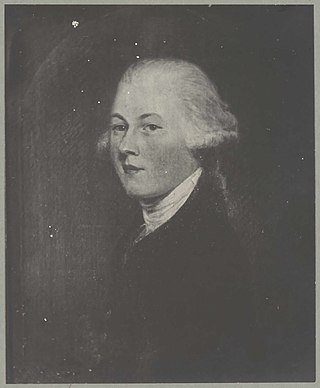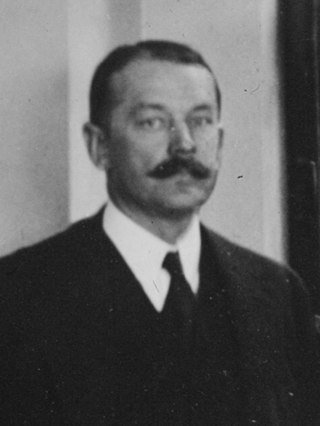
Bowie is a city in Prince George's County, Maryland, United States. Per the 2020 census, the population was 58,329. Bowie has grown from a small railroad stop to the largest municipality in Prince George's County, and the fifth most populous city and third largest city by area in the U.S. state of Maryland. In 2014, CNN Money ranked Bowie 28th in its Best Places to Live list.
Benjamin Tasker Sr. was the 21st Proprietary Governor of Maryland from 1752 to 1753. He also occupied a number of other significant colonial offices, including, on various occasions, being elected Mayor of Annapolis.

Benjamin Ogle was the ninth Governor of Maryland from 1798 to 1801.

Samuel Ogle was the 16th, 18th and 20th Proprietary Governor of Maryland from 1731 to 1732, 1733 to 1742, and 1746/1747 to 1752.
Belair Stud was an American thoroughbred horse racing stable and breeding farm founded by Provincial Governor of Maryland Samuel Ogle in 1747 in Collington, Prince George's County, Maryland, in Colonial America.

William Woodward Sr. was an American banker and major owner and breeder in thoroughbred horse racing.

Piscataway is an unincorporated community in Prince George's County, Maryland, United States. It is one of the oldest European-colonized communities in the state. The Piscataway Creek provided sea transportation for export of tobacco. It is located near the prior Piscataway tribe village of Kittamaqundi.

Maryland Route 197 is a state highway in the U.S. state of Maryland. Known for most of its length as Laurel Bowie Road, the state highway runs 14.64 miles (23.56 km) from U.S. Route 301 in Bowie north to MD 198 in Laurel. MD 197 serves as the main connection between Bowie and Laurel in northern Prince George's County. The highway also provides access to Patuxent Wildlife Research Center and Bowie State University. MD 197 also connects US 50 in Bowie and the Baltimore–Washington Parkway in South Laurel with the Bowie State MARC station.

The Belair Mansion, located in the historic Collington area and in Bowie, Maryland, United States, built c. 1745, is the Georgian style plantation house of Provincial Governor of Maryland, Samuel Ogle. Later home to another Maryland governor, the mansion is listed on the National Register of Historic Places.
Queen Anne in Prince George's County, Maryland, United States, is a former port on the Patuxent River. It was delineated as a CDP for the 2010 census, at which time it had a population of 1,280. Per the 2020 census, the population was 1,405.

St. Barnabas Church, also known as St. Barnabas' Episcopal Church, Leeland, was built in Leeland, Maryland, and was established in 1704 as the parish church of Queen Anne Parish which had been established that same year. Because of its location in one of the richest tobacco-producing regions in Colonial Maryland, the small church has been a cultural hub for southern Maryland from early colonial times, through the American Revolution, Civil War, and Reconstruction. The church holds some highly significant art and was the scene of a fiery anti-revolutionary showdown that was close to erupting in violence.

Fairview construction began around the year 1788 on an expanse of land owned by Baruch Duckett in Collington, Maryland. The house is a transitional federal/Greek revival design considered to be a significant part of the Prince George's County heritage. Fairview is a two-story stuccoed brick plantation house with flush end chimneys and a unique stepped gable at one gable end. Its Georgian plan interior features fine Federal style trim.

Mareen Duvall (1625–1694) was a French Huguenot and an early American settler.

Broad Creek in Prince George's County was the first footprint of European settlement in the immediate counties around what would become the nation's capital, Washington, D.C. The area is part of greater Fort Washington.

James Thomas Woodward was an American banker and owner of a major thoroughbred horse dynasty.
Jacob Henderson was an Irish clergyman and philologist who emigrated to the colonial Provinces of Pennsylvania, then Maryland, where he became a prominent land owner and church leader.
Queen Mab was part of the first pair of English-bred Thoroughbred horses imported to the Province of Maryland in 1747 by Provincial Governor of Maryland, Samuel Ogle.

Governor's Bridge is an historic single-lane bridge over the Patuxent River near Bowie, Maryland. The river marks the boundary between Prince George's and Anne Arundel counties. A bridge has been located on this site since the mid-18th century.
Richard Lowndes Ogle (1819-1895) was the son of Benjamin Ogle II and the grandson of Maryland Governor Benjamin Ogle.
Collington Branch is a stream that flows into the Western Branch of the Patuxent River in Prince George's County, Maryland.














